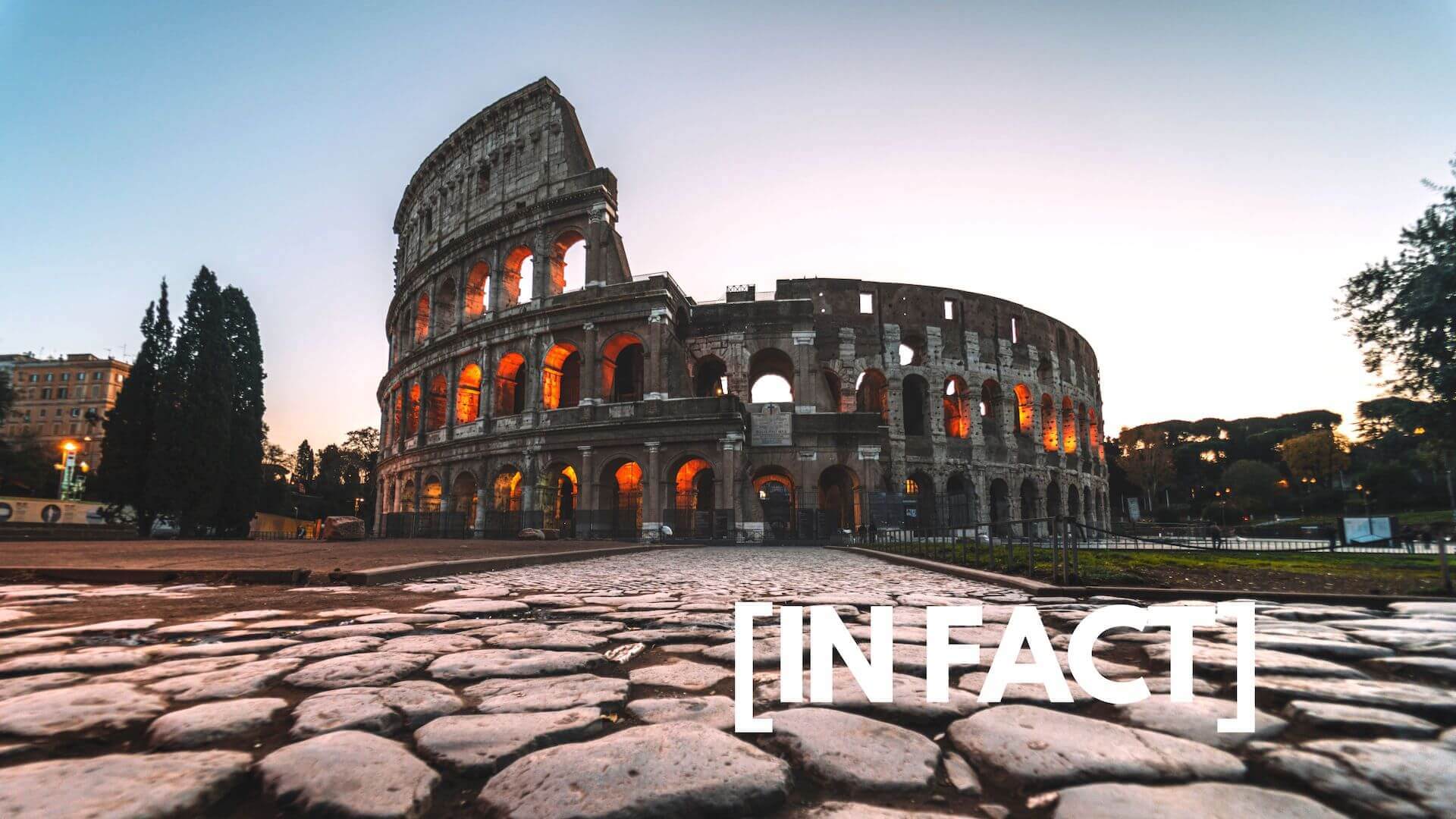
30 Interesting Facts about the Colosseum that Will Make You Appreciate its Beauty and Significance
Imagine being in a massive stadium that can hold up to 80,000 people, watching gladiators fight to the death, wild animals being hunted, criminals being executed, and even ships battling on water. This was the reality for the ancient Romans who visited the Colosseum, the largest and most famous amphitheater in the world. The Colosseum is not only a marvel of engineering and architecture but also a witness to the history and culture of the Roman Empire. In this article, you will discover some of the most interesting facts about the Colosseum that will make you appreciate its beauty and significance even more.
30 Interesting Facts about the Colosseum in Rome
Let’s learn some of the most interesting facts about the Roman Colosseum that will make you appreciate its beauty and significance even more.
Interesting Facts about the Colosseum Architecture and Design
1. The Colosseum is the largest amphitheater ever built. It measures 189 by 156 meters and reaches a height of 50 meters (about the height of a 12-storey building). This ancient sporting arena could easily fit a modern-day football pitch inside!
2. The Colosseum was built with a complex system of barrel vaults and groin vaults, using stone, concrete, and bricks. Its main structural framework and facade are travertine. The secondary walls are volcanic tufa. The inner bowl and the arcade vaults are concrete.
3. The Colosseum had 80 entrances and could seat up to 80,000 spectators, who were divided into different sections according to their social status. The emperor had his own box, while the senators and knights had the best seats in the lower tiers. The women, slaves, and foreigners had to sit in the upper tiers or stand in the gallery.
4. The Colosseum had a retractable awning called the velarium, which was operated by hundreds of sailors. The velarium provided shade and protection from the sun and rain for the spectators. It also created a colorful effect and enhanced the acoustics of the arena.
5. The Colosseum had an underground section called the hypogeum, which was added by Emperor Domitian. The hypogeum consisted of tunnels, chambers, cages, and lifts that housed the animals and gladiators who were waiting to perform in the arena above. There were also 36 trap doors that allowed for sudden appearances and disappearances of the performers.
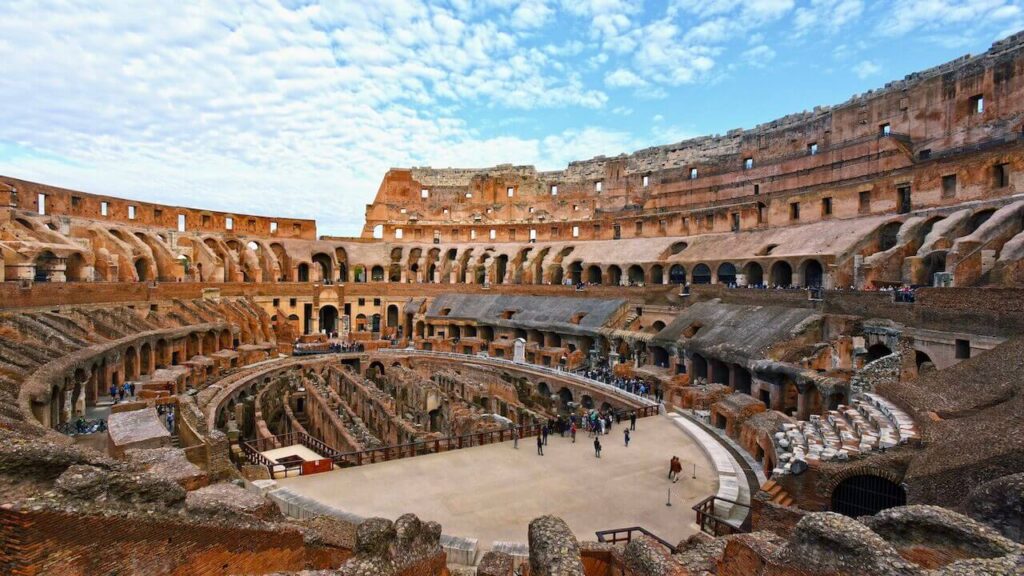
Interesting Facts about the Colosseum Construction and Cost
6. The Colosseum was built between 72 and 80 CE by the Flavian emperors Vespasian, Titus, and Domitian. It was originally called the Flavian Amphitheatre, after the family name of the emperors. The name Colosseum came from a colossal statue of Nero that stood near the amphitheater.
7. The Colosseum was built with the manpower of tens of thousands of slaves, mostly captured from the Jewish War (66-70 CE). The slaves worked day and night to complete the colossal project in less than 10 years.
8. The Colosseum was a very expensive building to construct and maintain. Indeed, the estimation shows that it cost about 100,000 pounds of gold (equivalent to about $5 billion today) to build. Additionally, it took about 500,000 pounds of silver (equivalent to about $25 million today) per year to operate.
Interesting Facts about the Colosseum Spectacles and Games
9. The Colosseum was used for various spectacles and games. To illustrate, gladiator fights, animal hunts, executions, and even mock naval battles. To stage the naval battles, the arena was flooded with water from a nearby aqueduct. The water was then drained through a complex system of pipes and channels.
10. The first games ever to be held were in 80 CE, under Emperor Titus (the son of Vespasian). They ran it for 100 days straight. Games continued to be held for centuries to come – gladiatorial games until the fifth century and animal hunts until the 6th century.
11. The events at the Colosseum were seriously brutal, though. During certain games held by the emperors, around 10,000 animals were killed in a single day. Particularly, some of the animals were exotic and rare, such as lions, tigers, elephants, rhinos, hippos, giraffes, bears, crocodiles, and ostriches. They were brought from all over the Roman Empire and beyond.
12. The gladiators who fought in the Colosseum were mostly slaves, prisoners of war, or criminals who had been sentenced to death. They were trained in special schools called Ludus gladiatorius. Some gladiators were volunteers who sought fame and fortune in the arena. They were usually divided into different types based on their weapons and armor.
13. The spectators who watched the games at the Colosseum were often very passionate and vocal about their favorite gladiators or teams. They would cheer, boo, or chant slogans to show their support or displeasure. They would also vote with their thumbs to decide whether a defeated gladiator should live or die.
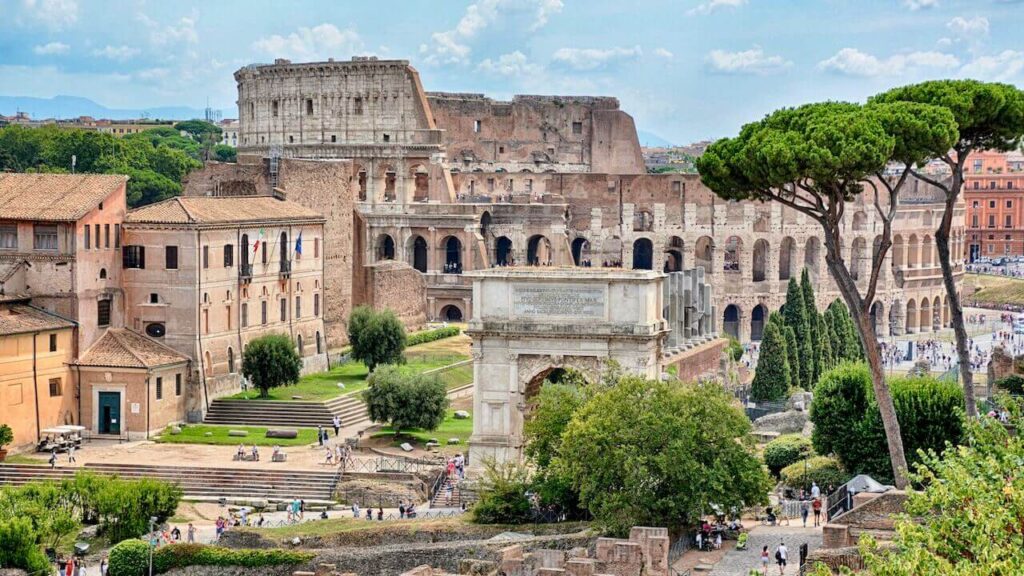
Interesting Facts about the Colosseum Damage and Restoration
14. Several natural disasters, such as earthquakes, fires, and lightning strikes, damaged the Colosseum. It was also plundered by barbarians and later by locals who used its stones and metal for other buildings. In the Middle Ages, two powerful Roman families converted the Colosseum into a fortress. Later, it was used as a quarry, a garden, a workshop, a housing complex, a religious shrine, and a bullring.
15. The Colosseum was neglected for a long time. Until the 18th century, Pope Benedict XIV declared it a sacred site in memory of the Christian martyrs who had died there. He also ordered its preservation and restoration. Since then, several popes have sponsored various projects to repair and conserve the Colosseum.
16. The Colosseum is today a popular tourist attraction and a symbol of Rome and its history. The amphitheater is also a UNESCO World Heritage Site and one of the New Seven Wonders of the World. It hosts various cultural events and concerts. It is illuminated at night in different colors depending on global events. Furthermore, millions of people pilgrimage there every year on Good Friday when the Pope leads a torchlit procession around its stations of the cross.
17. The Colosseum is still facing many threats and challenges, such as pollution, traffic, vandalism, and earthquakes. It also suffers from structural problems, such as cracks, holes, and erosion. Therefore, the Colosseum needs constant maintenance and monitoring to ensure its stability and safety.
18. The Colosseum is undergoing a major renovation project that started in 2013 and is expected to be completed by 2025. The project aims to restore the original appearance and functionality of the Colosseum, including its facade, entrances, hypogeum, arena floor, and velarium. The project is funded by a private sponsor, the Italian shoe company Tod’s. Actually, this is the largest and most ambitious restoration project ever undertaken on the Colosseum. It will allow visitors to experience the amphitheater as it was in its heyday.
Interesting Facts about the Colosseum Symbolism and Legacy
19. The Colosseum is a symbol of Rome and its history, as well as a testament to the achievements and challenges of the ancient Romans. It represents the power and glory of the Roman Empire, as well as the cruelty and violence of its society.
20. The Colosseum is also a symbol of the Christian faith. It is believed to be the site of many martyrdoms of early Christians who were persecuted by the Roman authorities for their religion. They were thrown to the lions or burned alive in the arena as a spectacle for the pagan crowd. However, some historians doubt whether this actually happened in the Colosseum, or whether it was a later legend.
21. The Colosseum has inspired many artists, writers, and filmmakers over the centuries. They used it as a setting or a motif for their works. Some of the most famous examples are Dante’s Inferno, Shakespeare’s Titus Andronicus, Byron’s Childe Harold’s Pilgrimage, Gibbon’s Decline and Fall of the Roman Empire, Ridley Scott’s Gladiator, and Robert Harris’s Pompeii.
22. The Colosseum has also influenced many modern architects and engineers. They have studied its design and structure to create similar or comparable buildings. Some of the most notable examples are the Paris Opera House, the Madison Square Garden, the Los Angeles Memorial Coliseum, and the Wembley Stadium.
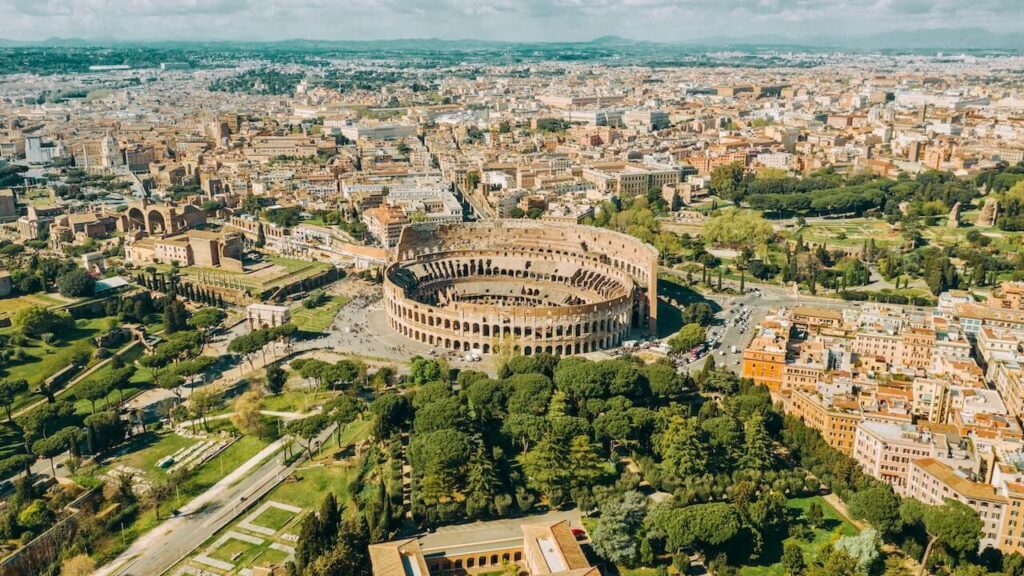
Other Aspects of the Colosseum
23. Surrounding the amphitheater were shops, taverns, brothels, and gambling dens that catered to the needs and desires of the spectators. The Colosseum also had its own currency, called the Tessera. It was a small bronze token that could be exchanged for food, drinks, or souvenirs.
24. The Colosseum was designed to create a dramatic and theatrical effect for the audience. The arena floor had sand covered to absorb the blood and gore of the events. Also, it was decorated with props and scenery to create different settings and atmospheres. Moreover, the Colosseum had special effects, such as artificial rain, snow, or fire, that enhanced the realism and excitement of the shows.
25. The amphitheater was sometimes used as a venue for charitable events, such as distributing food, clothing, or money to the poor and needy. The Colosseum also witnessed some acts of kindness and generosity. For example, when some gladiators spared their opponents’ lives or when some spectators intervened to save a condemned criminal or a persecuted Christian.
5 Fun and Mind-blowing Facts About the Roman Colosseum
26. The Colosseum was originally called the Flavian Amphitheatre, after the family name of the emperors who built it. The name Colosseum came from a colossal statue of Nero that stood near the amphitheater. The statue was later moved and destroyed, but the name stuck.
27. The Colosseum was not only used for entertainment but also for education and propaganda. Indeed, the games often had a political or moral message. For example, celebrating a military victory, honoring a deceased emperor, or demonstrating Roman values and virtues. The games also taught the spectators about geography, history, mythology, and zoology.
28. A sophisticated system of water supply and drainage enabled the Colosseum to flood for naval battles or drain for other events. The water originated from an aqueduct called Aqua Claudia, which connected to a reservoir under the nearby Temple of Claudius. Afterward, the aqueduct distributed the water through pipes and channels under the arena floor.
29. The Colosseum had a special device called a spoliarium, which was used to remove the corpses of gladiators and animals from the arena floor. The spoliarium was a large elevator that lifted the bodies up to a platform where they were stripped of their weapons and armor. The bodies were then disposed of in various ways, such as burial, cremation, or feeding to wild animals.
30. The Colosseum had a secret passage that connected it to the nearby Ludus Magnus, which was the largest gladiator school in Rome. The passage allowed the gladiators to enter and exit the arena without being seen by the public. It also served as an emergency exit in case of riots or fires. The passage was discovered in 1938 during an excavation project.
Frequently Asked Questions
Besides the interesting facts about the Colosseum, the FAQ below will surely give you more info when visiting one of the New Seven Wonders of the World in Rome.
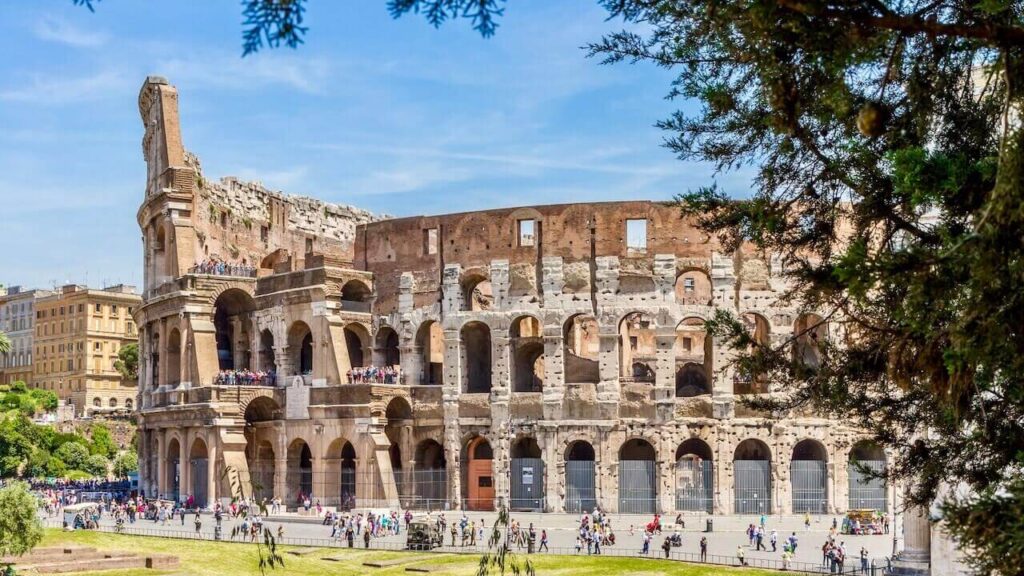
1. Why is the Colosseum so Popular for Tourists?
The Colosseum is so popular with tourists because it is one of the most iconic and impressive monuments of ancient Rome. It is a symbol of the power and glory of the Roman Empire, as well as a witness to the history and culture of the Roman people. It is also a marvel of engineering and architecture that hosted many spectacles and events that entertained and educated the public.
2. How Many Tourists Visit the Colosseum in Rome?
According to Statista’s statistics, over 7.6 million tourists visited the Colosseum in Rome in 2018 and 2019. Thus, it is the most-visited monument in Italy and even one of the most visited attractions in the world. However, due to the COVID-19 pandemic, the number of visitors dropped significantly in 2020 and 2021.
3. When should I Visit the Colosseum?
The best time to visit the Colosseum is either early in the morning or late in the afternoon when there are fewer crowds and less heat. The Colosseum is open every day except January 1st and December 25th, from 8:30 a.m. to 7:00 p.m. (last admission at 6:00 p.m.). But, the opening hours may vary depending on the season and special events. Hence, you should carefully check the opening time of the Colosseum when planning to visit it.
4. What can We Do in Colosseum?
There are many things you can do in Colosseum, such as:
- Explore the different levels and sections of the amphitheater. It’s where you can admire its architecture and design, and imagine what it looked like in its heyday.
- Learn about the history and culture of the Colosseum. Know more about its spectacles and games, its gladiators and animals, and its emperors and spectators, through audio guides, guided tours, or interactive exhibits.
- Enjoy the panoramic views of Rome from the upper tiers or from the arena floor. It’s where you can also see the underground section (the hypogeum) that housed the performers and machinery.
- Attend one of the cultural events or concerts that are occasionally held in the Colosseum, such as opera performances or rock shows.
- Take photos or selfies with the Colosseum as a backdrop, or with one of the costumed gladiators that often pose outside the entrance.
5. Can You just Walk into the Colosseum in Rome?
No, you cannot just walk into the Colosseum in Rome. You need to buy a ticket online or at the ticket office, and then go through security checks and metal detectors before entering the amphitheater. The tickets are valid for 24 hours and also include access to the Roman Forum and Palatine Hill.
6. Do You Need Passport to Enter Colosseum?
No, you do not need a passport to enter Colosseum. However, you may need a passport to enter Italy depending on your nationality and visa requirements. You should check with your local embassy or consulate before traveling to Italy.
7. Can I Take a Backpack into the Colosseum?
Yes, you can take a backpack to the Colosseum. However, it must be small (no larger than 30x30x15 cm) and it must be opened for inspection at security checks. You cannot bring any large bags or luggage into the Colosseum. Besides that, there are no lockers or storage facilities available at or near the Colosseum. Therefore, you should find a suitable backpack when visiting the Roman Colosseum
8. What do You Wear to the Colosseum?
You can wear whatever you like to the Colosseum. However, you should dress comfortably and appropriately for the weather and for walking. You should also wear sunscreen, sunglasses, a hat or cap, and a water bottle to protect yourself from the sun and the heat. You should also wear shoes that are suitable for uneven and slippery surfaces.
9. What is not Allowed in Colosseum?
There are some items that are not allowed in Colosseum, such as:
- Weapons, knives, scissors, or any sharp or dangerous objects.
- Glass bottles, cans, alcoholic beverages, or any food or drink that may stain or damage the monument.
- Tripods, selfie sticks, umbrellas, or any large or bulky items that may obstruct the view or the movement of other visitors.
- Pets, except for guide dogs or service animals.
- Drones, bicycles, skateboards, rollerblades, or any other vehicles or devices that may cause disturbance or damage.
10. Why do Tourists Visit Rome?
Tourists visit Rome for many reasons, such as:
- To see its rich historical and cultural heritage. Those span from ancient times to modern days, and include monuments, museums, churches, art galleries, and archaeological sites.
- To experience its vibrant and lively atmosphere, which offers a variety of entertainment options, such as restaurants, bars, cafes, shops, markets, festivals, and nightlife.
- To enjoy its beautiful and romantic scenery. There are features of hills, rivers, parks, gardens, fountains, squares, bridges, and statues.
- To taste its delicious and diverse cuisine, which reflects its regional and international influences, and includes dishes such as pizza, pasta, gelato, espresso, wine, cheese, and more.
11. Is It Worth Entering Colosseum?
Yes, it is worth entering the Colosseum, especially if you want to see and learn more about the history and culture of ancient Rome. The Colosseum is not only a stunning architectural masterpiece, but also a place where many spectacles and events took place, such as gladiator fights, animal hunts, executions, and even naval battles. By entering the Colosseum, you can explore its different levels and sections, see its underground tunnels and chambers, and imagine what it looked like in its heyday. You can also enjoy the panoramic views of Rome from the upper tiers or from the arena floor.
The Colosseum: A Wonder of the World that Deserves to be Admired and Appreciated
The Colosseum is a UNESCO World Heritage Site and one of the New Seven Wonders of the World that deserves to be admired and appreciated. It is a symbol of Rome and its history, as well as a testament to the achievements and challenges of the ancient Romans. The Colosseum has seen many spectacles and events over the centuries, from gladiator fights and animal hunts to executions and naval battles. It has also survived natural disasters, plundering, and neglect, and has been used for various purposes, such as a fortress, a garden, a shrine, and a concert venue. Today, the Colosseum is a popular tourist attraction and a cultural icon that hosts millions of visitors and pilgrims every year. If you ever have the chance to visit Rome, don’t miss the opportunity to see the Colosseum in person and marvel at its grandeur and glory.

Don’t Miss This Opportunity to See One of the Most Iconic and Impressive Monuments of Ancient Rome: The Roman Colosseum!
Are you ready to experience the Colosseum in person and witness its grandeur and glory? If so, don’t wait any longer, and book your ticket online now! By booking online, you can save time and money, as well as secure your preferred date and time slot. You can also choose from different types of tickets, such as regular, reduced, or free, depending on your eligibility.
But if you want to have a more immersive and informative experience at the Colosseum, you should consider booking a guided tour that will allow you to visit some exclusive areas, such as the underground section (the hypogeum) where the gladiators and animals were kept, or the arena floor where they fought. A guided tour will also provide you with stories and interesting facts about the Colosseum, its spectacles and games, its emperors and spectators, and its symbolism and legacy. A guided tour usually also covers the Roman Forum and the Palatine Hill, which are two other important archaeological sites in Rome.
Don’t miss this opportunity to see one of the most iconic and impressive monuments of ancient Rome. Book your ticket online or your guided tour today and get ready for an unforgettable adventure at the Colosseum!
Note:
This post contains affiliate links from which I can earn commissions if you use services or buy products from the blog’s partners. If you love the blog, please use the services or buy the products. In that way, you give me support for the blog’s maintenance and development. I appreciate it a lot and thank you for that!
Hey, I Have Travel Planning Resources Here to Help You Easily Plan Your TripEssential Items
Don't forget to bring the Travel Medicines, as well as your necessary Travel Kit. If Your Next Destination Requires a Visa
IVISA will help you with their speed, simple, and secured services with just a minimal chance of being rejected.
Find Your Flight and Transportation to The Destinations
You can read my travel tips to Find Cheap Flights.
You can also use 12Go to book buses, trains, ferries, or any transportation to places.
Book An Accommodation
I mostly use Booking.com to find a place for my trip. Sometimes I try to Get Free Credits on Airbnb to book homestays. Driving Yourself Will be More Enjoyable
You can easily compare prices and find great deals on Discover Cars.
Protect Yourself and Your Trip
Travel Insurance is Important, especially after COVID-19, there are more possible health issues and pandemics. Please don't forget to have a shield for yourself and your trips!
IF YOU ARE INTERESTED IN THE INTERESTING FACTS ABOUT THE COLOSSEUM, ‘PIN IT’ NOW AND SAVE THE INFO FOR YOUR NEXT TRIP TO ROME
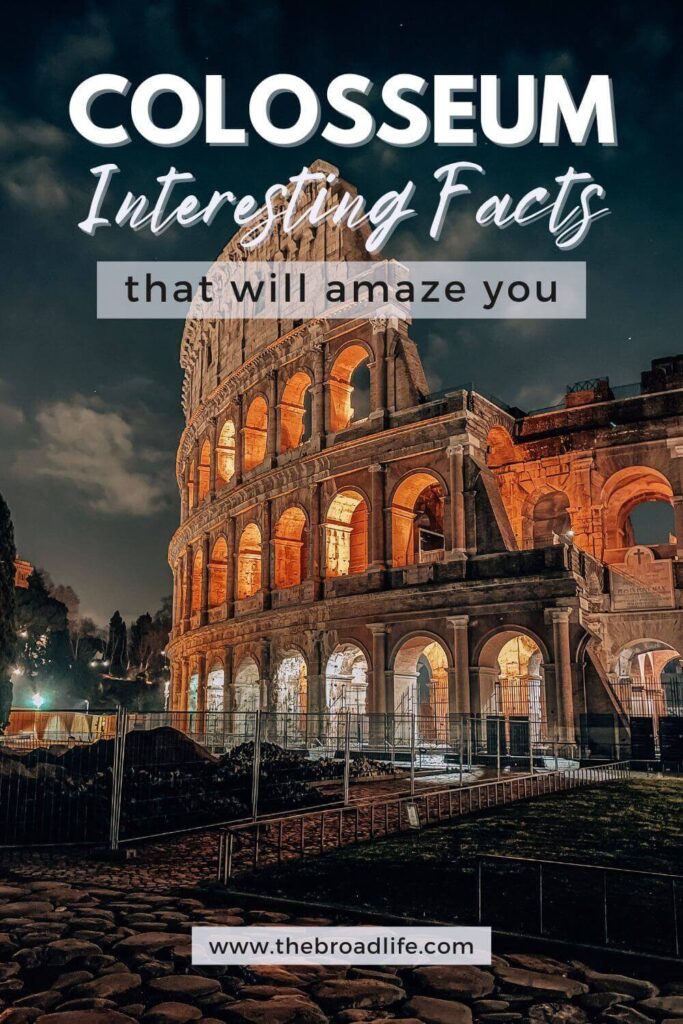

14 Comments
-
Bryan
The Roman Colleseum would certainly be a sight to behold! So much history contained within this structure. I like that they still let people inside to walk around and I like that there have been efforts to restore it.
-
Debbie
Thank you for highlighting all the history of the colosseum. I really hope to visit this amazing one of the New Seven Wonders of the World.
-
Richard Lowe
I’ve never visited italy although I love reading about Rome. someday I plan to visit, and the colleseum is definitely on my list.
-
Stephanie
I was in Rome in 2007 and visited the Colosseum while there. It was such a neat place and the tour guides did tell us some of these facts, but not all! I love walking around all of the Ancient Roman ruins there.
-
Ntensibe Edgar
Wow….this is one very expensive building! going by the materials that were used to put it up, i am shocked it is still standing, in any way. thanks for sharing these.
-
Olga
I love Italy and Rome. I saw the Colosseum but never been inside. Thank you for an informative article. I hope I`ll show The Colosseum to my kids once.
-
Nikki wayne
Wow! I would really love to see this in person. I really hope i can take my kids there
-
-
Sonia Seivwright
Wow, This building is actually real? the Colosseum IS truly fascinating! It’s amazing to think about the sheer size of the amphitheater and the complexity of its design. I had no idea that there were so many trap doors and hidden chambers beneath the arena. The fact that it could seat up to 80,000 spectators is mind-boggling, and it’s interesting to learn about the different social classes and sections within the Colosseum. I can’t wait to visit.
-
Melanie E
So many interesting facts about the Colosseum. This isn’t a place I have had a chance ot visit yet but i would love ot go when I get an opportunity. Thanks for the tips about visiting.
-
Bedabrata Chakraborty
I have friends who have visited the Colosseum. it is on, my travel list and maybe next year. thanks for the interesting read. 80000 people in one place is beyond imagination.



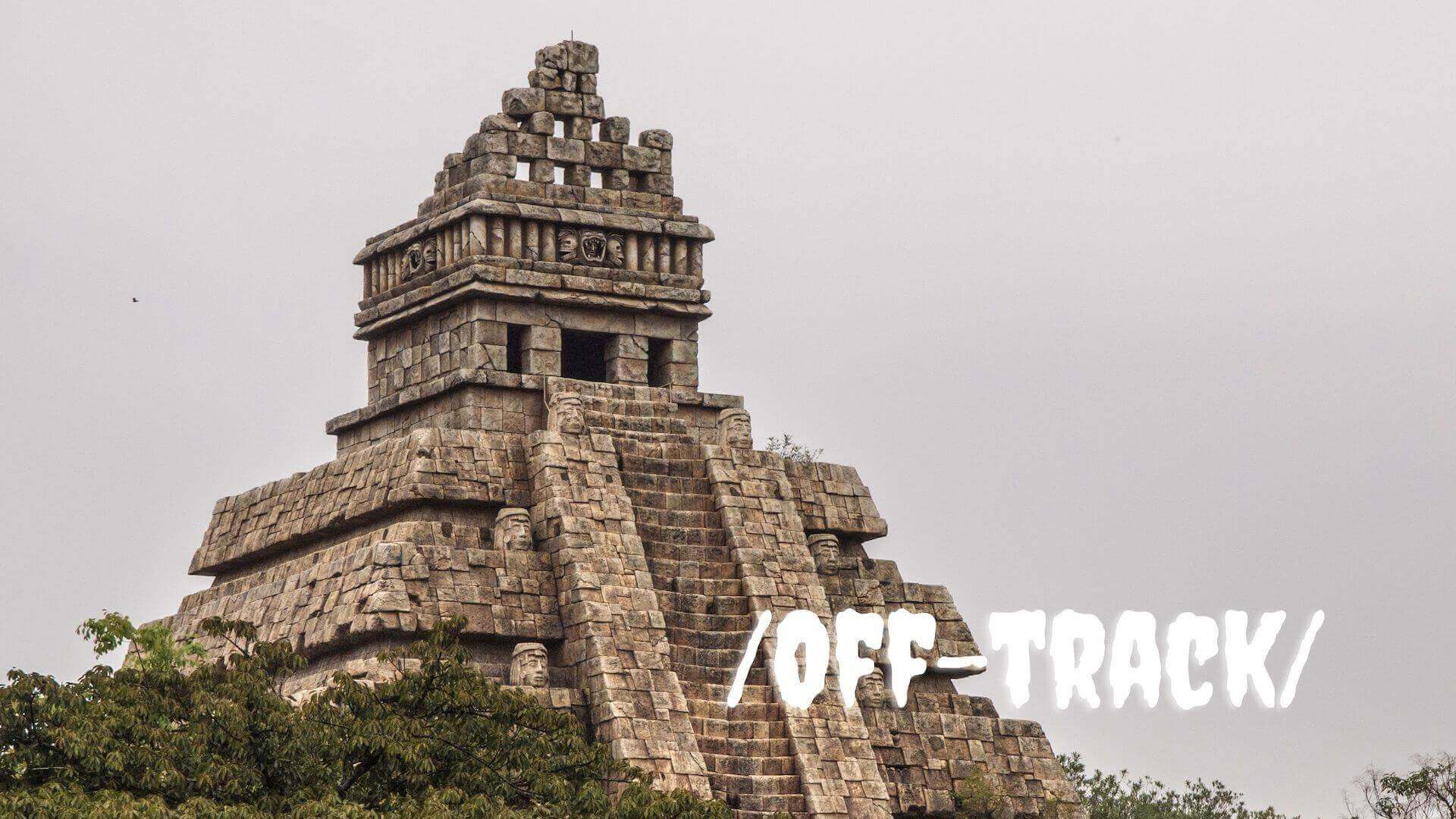


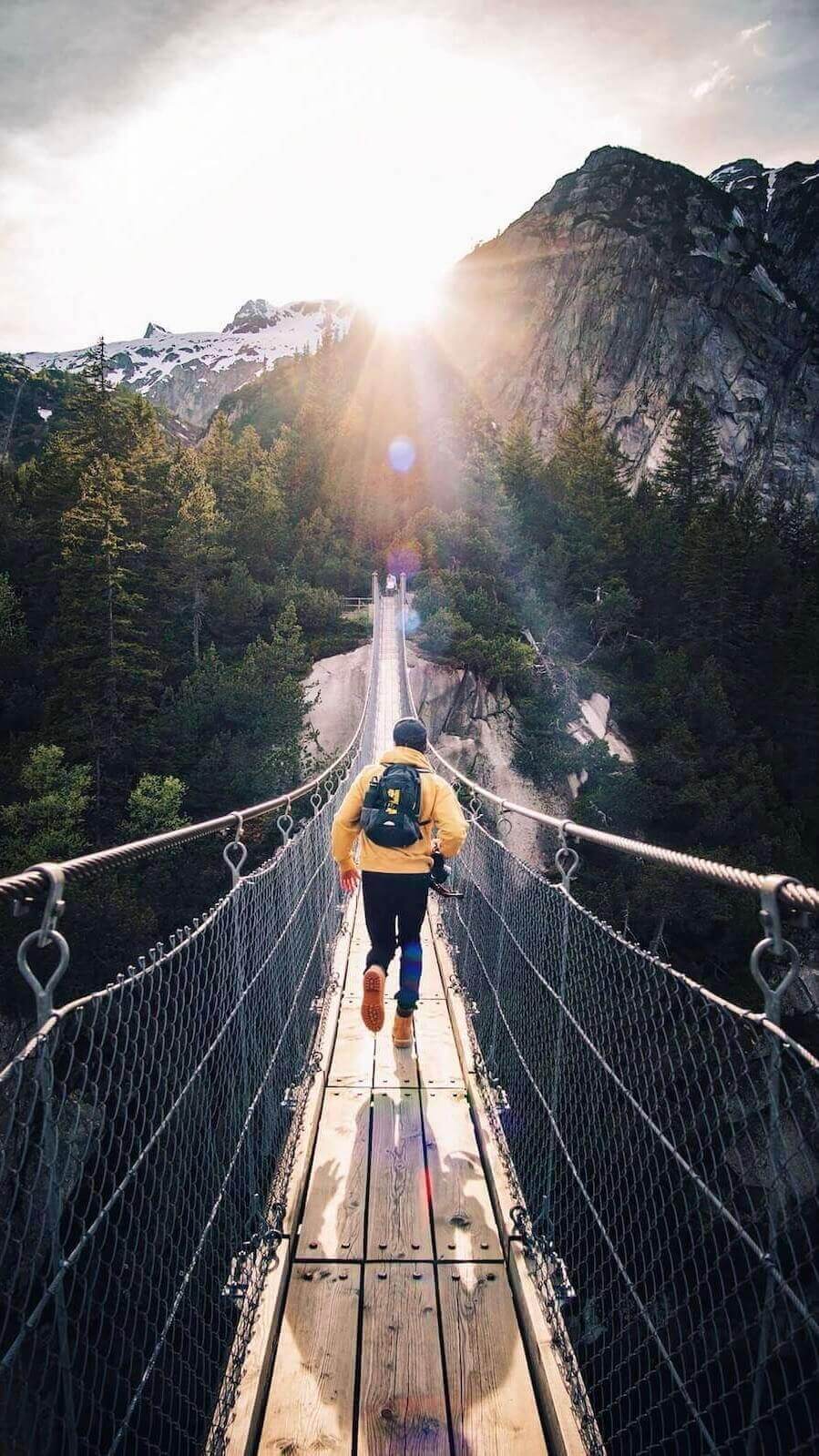
Marysa
I always found the naval battles to be one of the most fascinating things about the COlosseum. It is amazing how they were able to put together resources to have such an incredible stage for events.